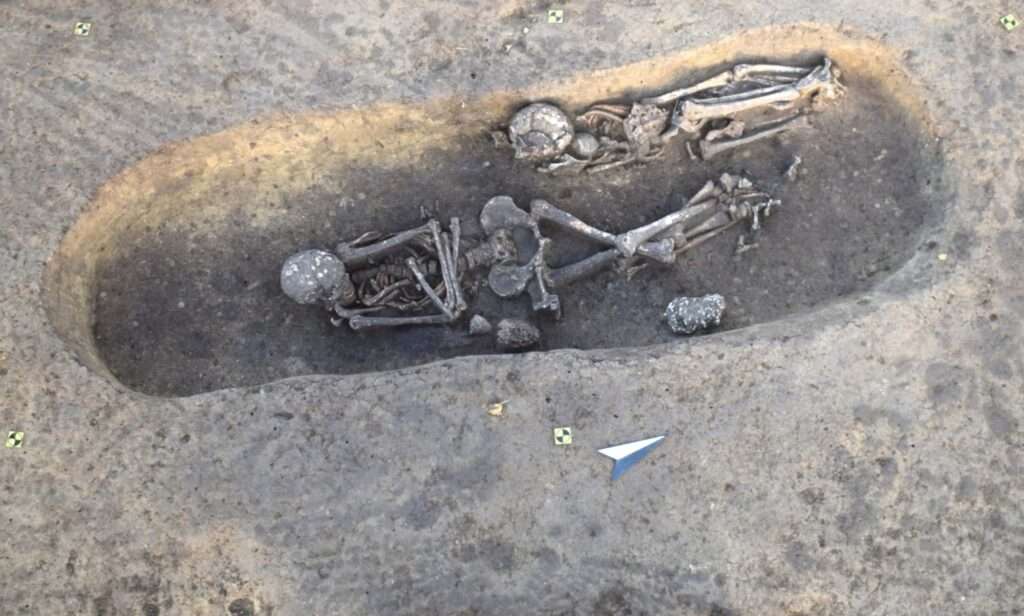The 4,000-year-old bodies of two prehistoric men have been identified as among the world’s oldest known plague victims.
The two Early Bronze Age corpses – aged between 22 and 30 – were discovered in a row of 22 graves at an ancient burial site in Drasenhofen, Austria.
Archaeologists say that because their tombs were set slightly apart from the rest, their community could have known the disease was infectious.
Austrian Academy of Sciences (OeAW) archaeologist Katharina Rebay-Salisbury told Newsflash in an interview: “I certainly think that it has a relevance that their graves are on the outskirts of the cemetery, I think there was an awareness and that there was a reason why these bodies were put towards the edges of the burial plot.”

Researchers took blood samples from the victims’ teeth for study at the Max Planck Institute for Evolutionary Anthropology in Leipzig, Germany.
Both samples showed the presence of the Yersinia pestis bacteria, which causes the three different kinds of plague.
These include pneumonic plague, which infects the lungs; bubonic plague, which affects the lymph nodes; and septicemic plague, which infects the blood and causes tissues to turn black and die.
The study revealed that the pair were infected by two different strains of the bacteria in two separate illnesses.
Bubonic plague is notorious for its sweep through Europe in the 1300s, wiping out as much as half the population.
But Rebay-Salisbury added: “Unlike later in the Middle Ages, the plague may not have been transmitted by fleas because the early plague bacteria lacked important genetic properties for this.

“It could therefore have been other routes of infection such as droplet infections or the consumption of infected meat.
“In the compilation of all previously published plague victims of later prehistory in Eurasia, we observe that more men than women died from the plague.”
OeAW said: “The plague is a so-called zoonotic disease that can be transmitted from animals to humans.
“Rodents are the most common species today, but it is possible that other species have played a role as hosts in the past.
“The men could have been shepherds, or they could have been exposed to the plague pathogens as part of transhumance or migratory grazing, accompanying herds to alpine pastures according to the seasons.
“Contact with wild animals, for example, in connection with hunting, seems possible.

“Likewise, participation in military campaigns could have accelerated the spread of the plague.”
The study was published in the journal ‘Archaeologia Austriaca’ in June 2023.
To find out more about the author, editor or agency that supplied this story – please click below.
Story By: Georgina Jadikovska, Sub-Editor: Michael Leidig, Agency: Newsflash
The Ananova page is created by and dedicated to professional, independent freelance journalists. It is a place for us to showcase our work. When our news is sold to our media partners, we will include the link here.




